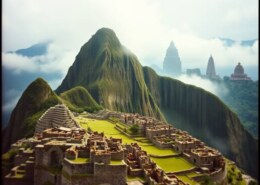When you think of archaeology, you might picture dusty ruins and faded scrolls. But in the 21st century, archaeology is anything but ancient. With the help of cutting-edge technology and a new wave of global collaboration, archaeologists are uncovering lost cities, forgotten civilizations, and hidden histories that are rewriting everything we thought we knew about the past.
From rainforests to deserts, beneath oceans and city streets, the earth is still giving up its secrets—revealing that some of the greatest human stories are the ones we’re just now discovering.
🗺️ The Myth of “Discovery” in the Modern Age
Many assume the age of discovery is over—that we’ve already mapped and excavated everything worth finding. But that couldn’t be further from the truth. In fact, some of archaeology’s most astonishing finds have happened in just the past two decades.
Thanks to satellite imaging, LiDAR scanning, ground-penetrating radar, and DNA analysis, archaeologists are no longer limited to what’s visible on the surface. They’re now detecting entire cities hidden beneath dense jungle canopies, buried under sand dunes, or submerged beneath the sea.
And what they’re finding is changing history.
🌿 Cities Beneath the Trees: The Amazon and Beyond
For years, many believed the Amazon rainforest was largely uninhabited by complex societies. But recent discoveries tell a very different story.
Using LiDAR (Light Detection and Ranging) technology, researchers have uncovered vast networks of cities in parts of Bolivia and Brazil—complete with plazas, pyramids, causeways, and canals. These findings point to sophisticated urban planning and dense populations, possibly rivaling those of ancient Egypt or Mesopotamia.
These “lost cities” suggest that the Amazon once supported advanced civilizations that were largely wiped out by disease and colonization—leaving behind only scattered tribes and myths.
🔺 Rediscovering Ancient Civilizations
Here are just a few recent and fascinating discoveries:
-
Angkor (Cambodia): LiDAR scans have revealed that Angkor, already known for its majestic temples, was once part of an even larger and more complex urban sprawl, including roads, reservoirs, and residential districts.
-
Çatalhöyük (Turkey): One of the oldest known cities in the world, dating back to 7500 BCE, is providing insights into how humans first began living in large, organized settlements.
-
Heracleion (Egypt): Once a thriving port city mentioned by ancient Greek historians, Heracleion was lost to the sea for over 1,000 years until it was rediscovered off Egypt’s coast in the early 2000s—submerged and preservedin the Mediterranean.
-
The Arabian Peninsula: Ground surveys and satellite images are revealing ancient caravan cities that were part of early trade networks—supporting the idea that the region was once greener and more hospitable than today.
🧬 Technology Meets History: The New Tools of Archaeology
Modern archaeology goes far beyond digging with trowels and brushes. Today’s archaeologists are equipped with a scientific toolkit that includes:
-
LiDAR: Can map hidden structures through dense vegetation or forest cover
-
Ground-penetrating radar: Used to detect buried buildings and graves
-
Satellite imaging: Helps locate unusual patterns in topography that suggest man-made structures
-
DNA analysis: Reveals the genetic origins, diseases, and migration patterns of ancient peoples
-
3D reconstruction & AI modeling: Bring ancient cities to life with immersive digital models
This fusion of old-world curiosity and new-world tech is leading to discoveries that would’ve been impossible just 30 years ago.
🌍 Why These Discoveries Matter Today
Uncovering lost civilizations isn’t just about satisfying our curiosity—it’s about understanding ourselves.
-
Challenging colonial narratives: Many early historians dismissed non-Western civilizations as primitive. Modern archaeology is proving otherwise, showing that societies in Africa, the Americas, and Asia were just as advanced in science, engineering, and governance.
-
Climate lessons: Many ancient cities rose and fell due to environmental changes. Studying their successes and failures offers insight into how we might adapt to today’s climate crisis.
-
Cultural preservation: Every discovery is a chance to protect and honor the heritage of Indigenous communities whose stories have been silenced or overlooked.
🏛️ The Future of Archaeology
The 21st century is quickly becoming a golden age for archaeology—not because we’re discovering more ruins, but because we’re finally listening to what they’re telling us. With better tools, greater inclusivity, and growing respect for ancient cultures, we’re rewriting history one discovery at a time.
So while the pyramids and Stonehenge may still dazzle, don’t be surprised if the next big chapter in human history comes from beneath a jungle, at the bottom of the sea, or scanned from a satellite orbiting miles above Earth.
Final Thoughts: The Past Is Still Alive
Lost cities aren’t just ruins—they’re echoes of lives once lived, of civilizations that dreamed, built, traded, ruled, and fell. They remind us that history is not a straight line but a rich, winding web full of surprises. And thanks to modern archaeology, that web is growing more vibrant by the day.
In short, the past isn’t dead. We’re just now uncovering it.

